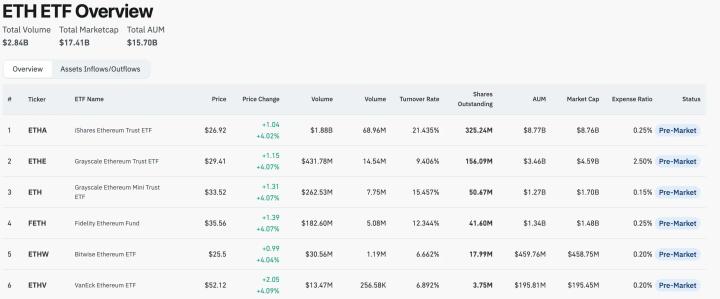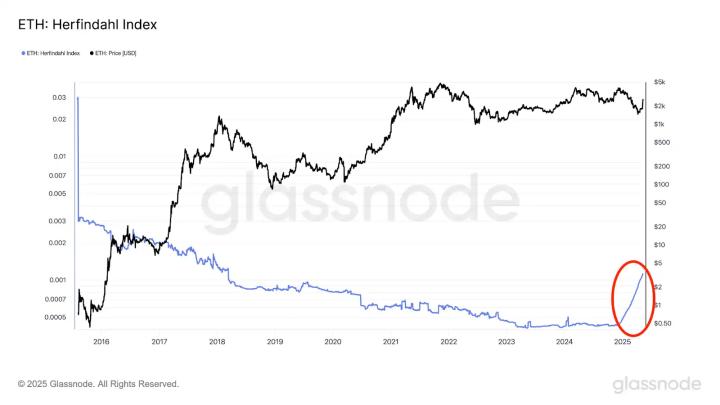Written by: TechFlow
Whenever the market is good, FUD is inevitable.
Today, a message has once again raised concerns about ETH's price:
Validators on the Ethereum network are queuing up to unstake ETH.
As a representative of the PoS consensus mechanism, staking ETH is technically used to maintain the security of the entire Ethereum network, and economically can generate additional income from staking, locking ETH's liquidity in the staking pool.
According to data from Validator Queue, as of July 23rd, approximately 521,252 ETH are in the validator exit queue, with a current market value of around $1.93 billion, and the waiting time for unstaking exceeds 9 days and 1 hour.
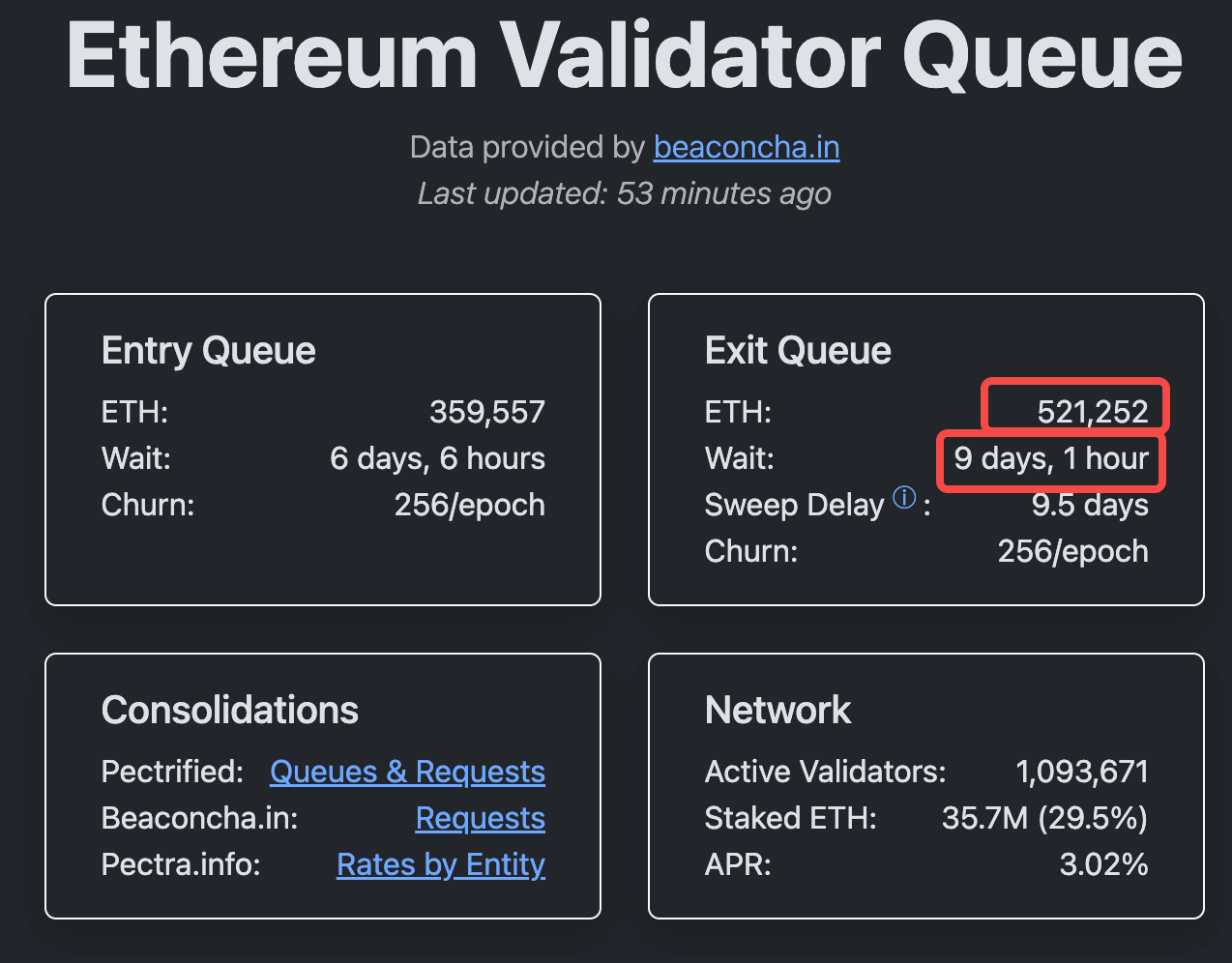
This is the longest queue validators have formed when choosing to exit over the past year.
Since each validator typically stakes 32 ETH, this theoretically represents over 16,000 validators seeking to exit staking. Such a large-scale queue for unstaking gives off a sense of danger.
Taking Profits?
Are whales and institutions about to sell ETH for profits?
The surge in Ethereum unstaking may be partially related to the recent price increase.
From the low point in early April 2025 (around $1,500-2,000), ETH has experienced a strong rebound, with a cumulative increase of 160% to date. Specifically, on July 21st, ETH reached a peak of $3,812, the highest in seven months.
Such rapid increases often prompt some investors to take profits, especially early stakers who may decide to lock in their gains after seeing returns, rather than continuing to hold.
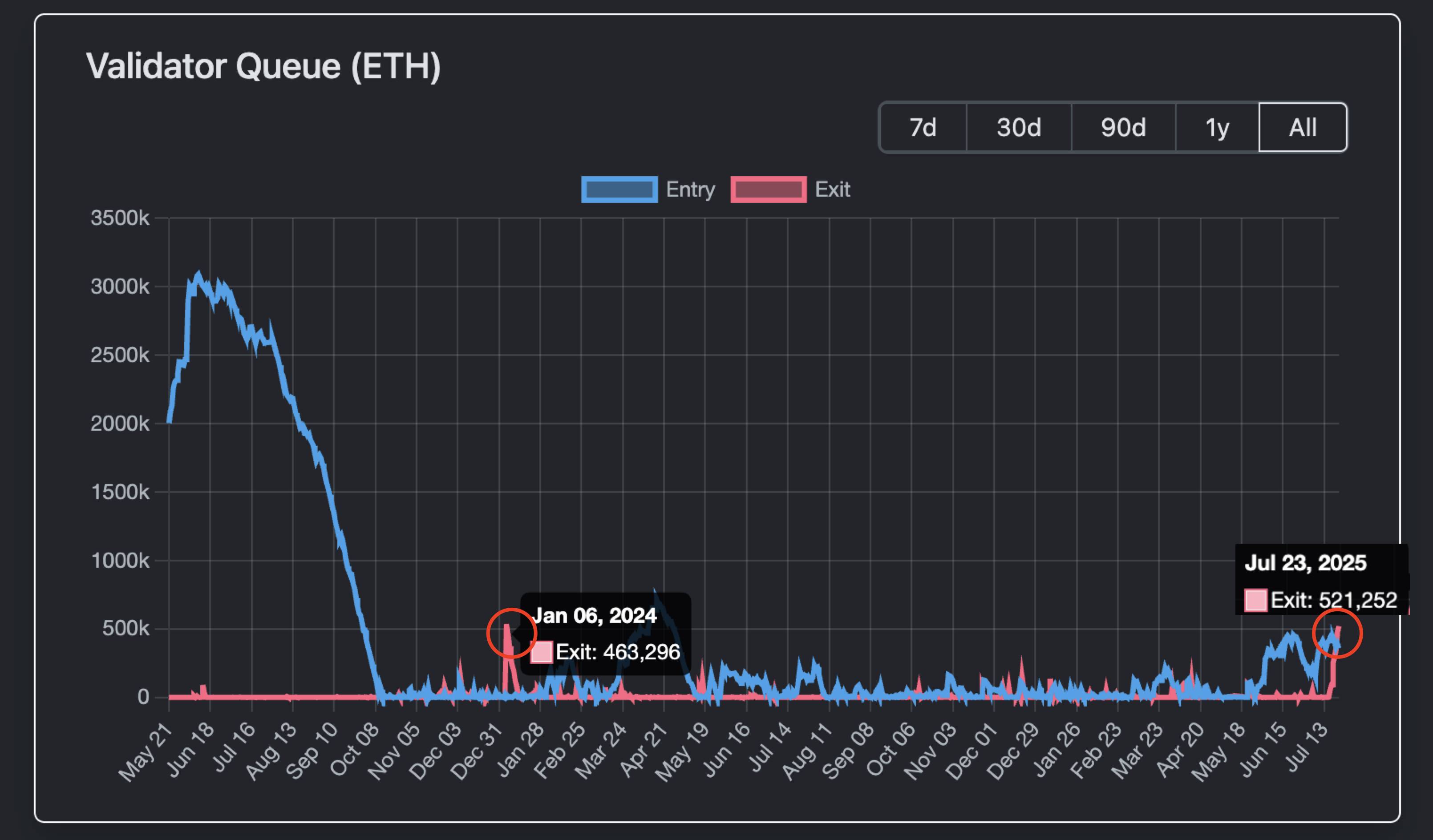
From a historical perspective, this pattern is not new.
From January to February 2024, after the ETH/BTC ratio rose 25% in a week, a similar scale of unstaking occurred, leading to a short-term price drop of 10%-15%. Around the same period, Celsius's bankruptcy liquidation saw 460,000 ETH unstaked in a short time, causing network validator exit queue congestion for about a week.
Not Necessarily Selling Pressure
Unlike before, although the ETH unstaking queue is long this time with a large unstaking amount, it does not directly mean selling pressure.
First, looking at Validator Queue data, on July 23rd, 520,000 ETH were in the unstaking queue, but simultaneously, 360,000 ETH entered the staking queue.
Offsetting these, the net ETH exit from the Ethereum network would be significantly reduced.
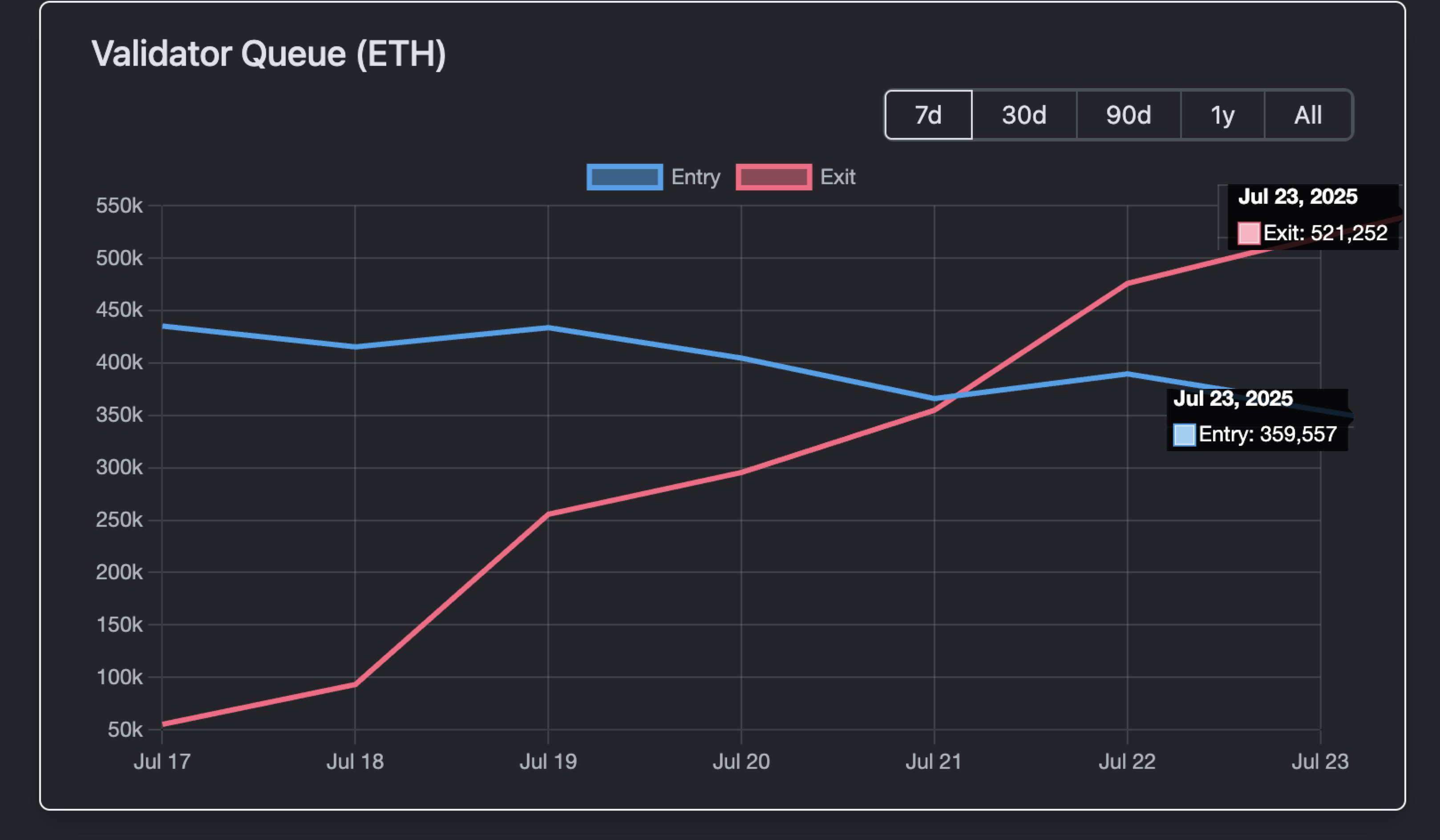
Secondly, institutional behavior provides a certain buffer.
Data on July 22nd showed that the total inflow of ETH spot ETFs from various institutions reached $3.1 billion, significantly larger than the 520,000 ETH in the unstaking queue (worth $1.9 billion) in absolute value.
And this is just the ETF net inflow for one day, not to mention the 9-day waiting period for validators to exit the queue.
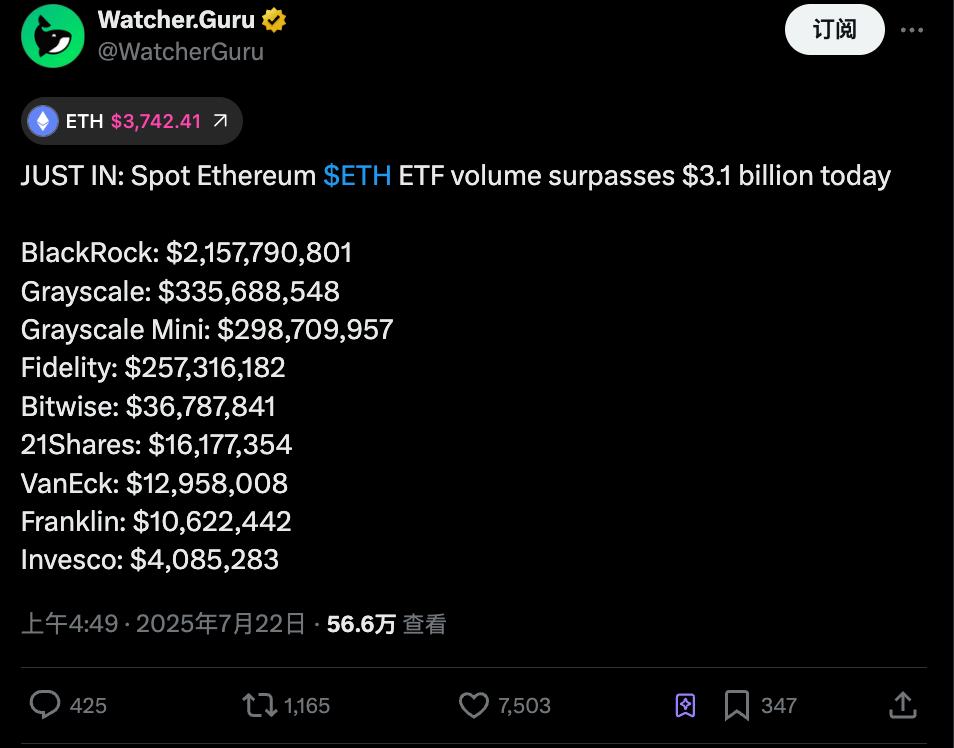
Moreover, unstaking does not necessarily mean selling.
In the current ETH price surge, concentrated unstaking could also be due to institutions adjusting custody services or shifting to crypto treasury strategies - more plainly, changing ETH custodians to seek more returns, rather than selling ETH.
On-chain, unstaked ETH is more likely to be used in DeFi and Non-Fungible Token related activities. For example, providing liquidity as collateral, or whales sweeping Crypto Punks floor prices yesterday;
Additionally, on-chain LST tokens often experience de-pegging, providing arbitrage opportunities - such as recent stETH to ETH ratio dropping to 0.996 (about 0.04% discount), with weETH showing similar fluctuations. Arbitrageurs buy discounted LST and wait for 1:1 re-pegging, increasing ETH demand.
Overall, unstaking appears more like an internal adjustment within the Ethereum ecosystem, rather than a direct selling signal.
However, social media offers various speculations. While concentrated unstaking may not indicate selling pressure, it could point to a phenomenon of "changing dealers".
Some argue that BlackRock, committed to pushing crypto assets into mainstream finance, has become the de facto major dealer for ETH. As of July data, BlackRock has accumulated over 2 million ETH (valued at $6.9-8.9 billion), representing 1.5%-2% of total ETH supply (approximately 120 million ETH).
This is not a secret but an open ETF asset management behavior, more like an institutional-level "open dealing" - publicly holding and accumulating ETH through ETFs to promote institutional adoption, rather than market manipulation.
The logic of changing dealers is that as Ethereum transitions from insider value consensus to a broader financial tool consensus, Wall Street's takeover is already a very obvious trend.
This speculation is not unreasonable. Staking and unstaking might be a transformation of chip structure.
Regardless, Ethereum's growth potential will continue to support its leadership in the crypto field, and this unstaking wave might just be the beginning of a new cycle.




